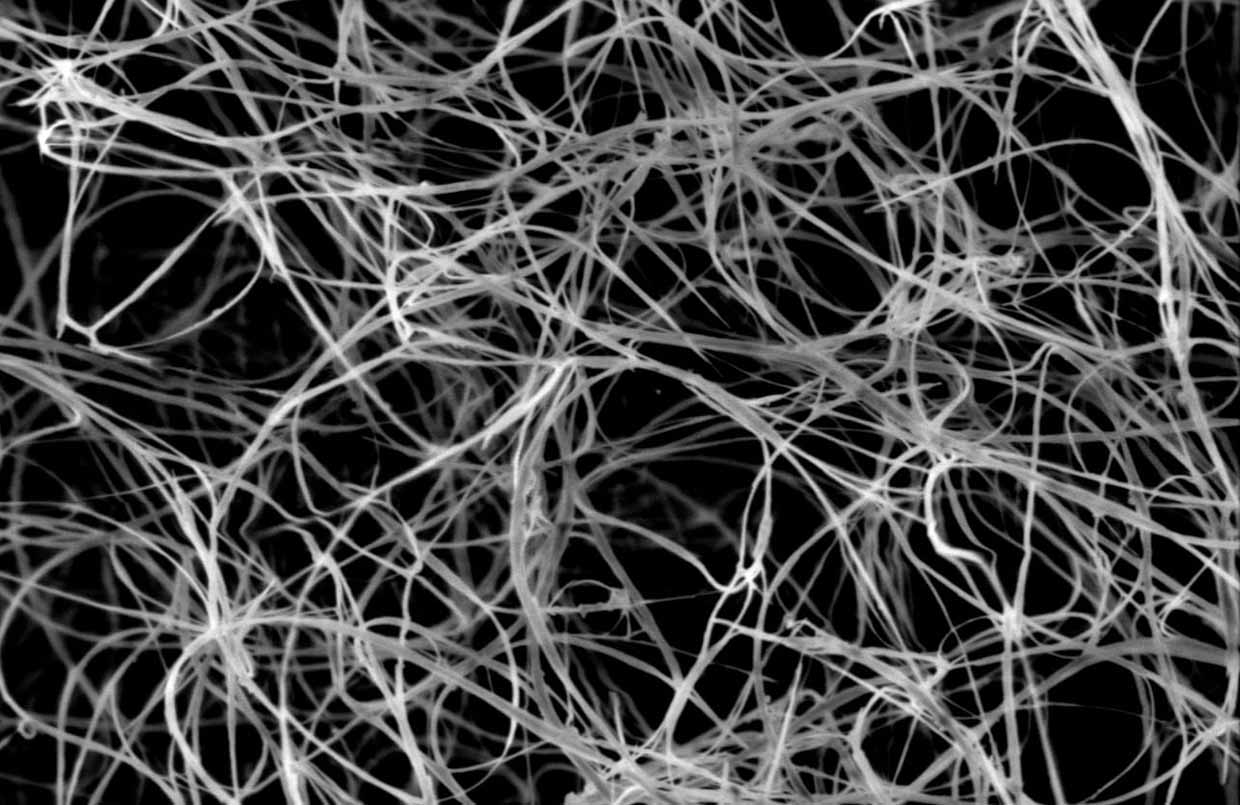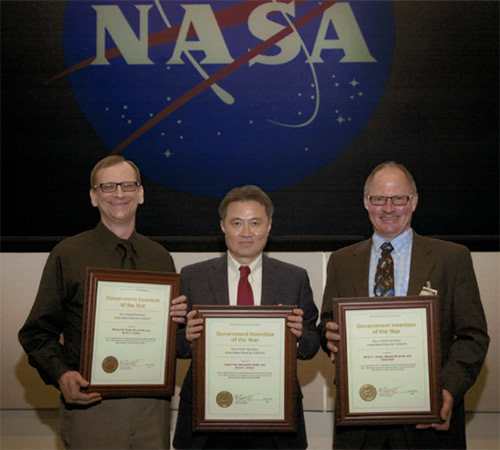A Rice team led by professors Matteo Pasquali and Angel Martí has simplified handling of the highly valuable nanotubes to make them more suitable for large-scale applications, including aerospace, electronics and energy-efficient materials.
The researchers reported in Nature Communications that boron nitride nanotubes, aka BNNTs, assemble themselves into liquid crystals under the right conditions, primarily concentrations above 170 parts per million by weight in chlorosulfonic acid.
These liquid crystals consist of aligned BNNTs that are far easier to process than the tangled nanotubes that usually form in solution. The lab proceeded to form fibers and films from the liquid crystalline solutions.
“BNNT fibers are attractive for the manufacture of a variety of products, with applications that range from wearables to aerospace vehicles,” said Martí, whose lab designed solutions and helped characterize the fibers produced in Pasquali’s lab.
Boron nitride nanotubes are like carbon nanotubes, but with alternating boron and nitrogen atoms instead of carbon in their hexagonal lattices. Both types of nanotubes are strong, but unlike electrically conductive carbon nanotubes, BNNTs are good electrical insulators and are thermally and chemically stable in air up to 900 degrees Celsius (1,652 degrees Fahrenheit).

To form liquid crystals, the researchers needed to be sure their nanotubes were free of contaminants. Unfortunately, those contaminants were mostly bits of boron nitride that threatened to gum up the works.
“Early BNNT samples contained lots of non-nanotube boron nitride structures,” said graduate student and lead author Cedric Ginestra. “They were either chemically bound to the BNNTs or just physically adhered in a way that prevented BNNTs from dispersing in acid and aligning at higher concentrations.

“It is difficult to separate these boron nitride allotropes from BNNTs, and hard to even measure their concentration,” he said. “All the different types of boron nitride appear identical by basically every quantitative technique that we’ve tried so far.”
Working with their supplier to optimize their BNNT purification process for the formation of liquid crystalline solutions and using a purification process developed in the Pasquali lab helped them obtain better batches of BNNTs, he said. Once suitable material was produced, the Pasquali group was primed to quickly adapt its wet-spinning techniques for carbon nanotube fibers to make the first boron nitride threads with the process.
“There are reports of others taking solid puffs of BNNTs and stretching and twisting them to make a yarn, but that’s very different from our process,” Ginestra said. “Our goal was to make a very highly aligned fiber because the properties are better along the length of the nanotubes.”
Liquid crystals are the ideal precursor for fibers because the nanotubes within are already aligned, he said. BNNT alignment in the liquid crystals was identified microscopically by their birefringence, a phenomenon by which crystals split light, prism-like, even if they appear to be clear.
The films also demonstrated how BNNT solution processing can adopt methods developed for carbon nanotubes, Ginestra said. Such transparent thin films could be useful in next-generation electronics. “The BNNT film and fiber properties will improve as the material and our understanding of the liquid crystalline solution improves,” he said.
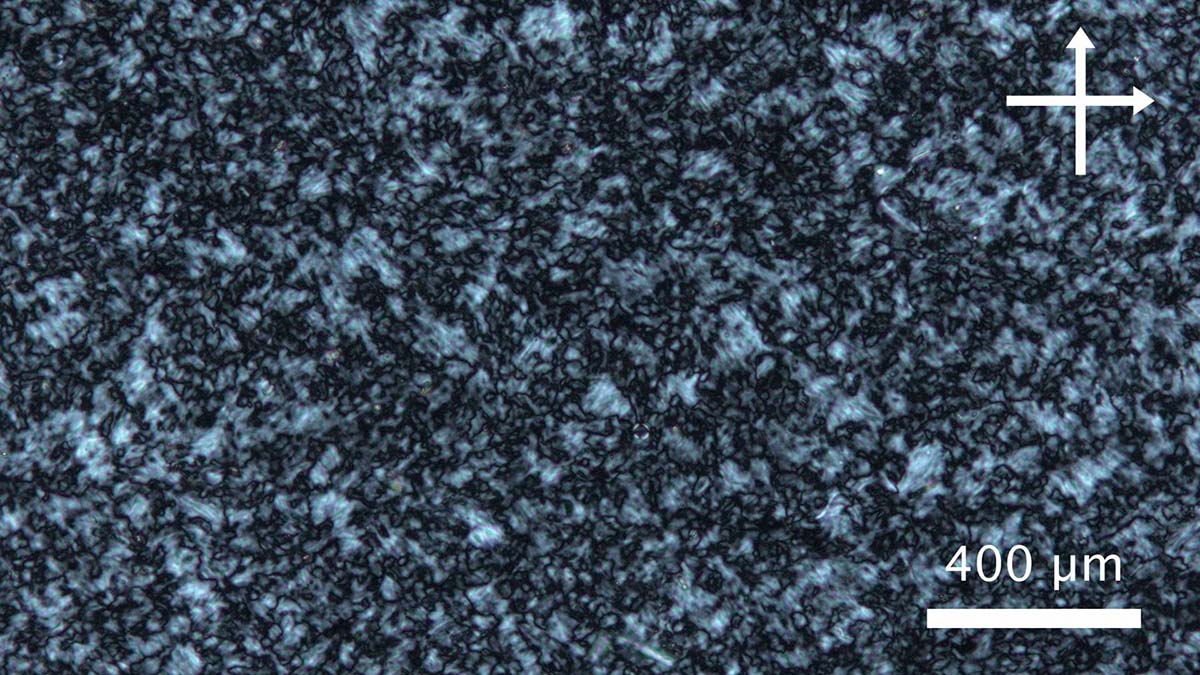
Martí noted BNNT films would be useful as filters for ultraviolet light, antifouling coatings and for corrosion protection.
Co-authors of the paper are Rice graduate students Cecilia Martínez-Jiménez and Oliver Dewey, alumni Ashleigh Smith McWilliams, Robert Headrick and Dmitry Kosynkin and postdoctoral researcher Jesus Acapulco; graduate student Asia Matatyaho Ya’akobiand professor emeritus Yeshayahu Talmon of the Technion-Israel Institute of Technology and the Russell Berrie Nanotechnology Institute, Haifa, Israel; Lyndsey Scammell and Michael Smith of BNNT LLC, Newport News, Virginia; former Rice postdoctoral researcher Daniel Marincel, now an assistant professor at the Rose-Hulman Institute of Technology, Terre Haute, Indiana; senior researcher Cheol Park of the NASA Langley Research Center, Hampton, Virginia; and associated research fellow Sang-Hyon Chuof the National Institute of Aerospace, Hampton, Virginia.
Martí is a professor of chemistry, bioengineering and materials science and nanoengineering. Pasquali is the A.J. Hartsook Professor of Chemical and Biomolecular Engineering, a professor of chemistry and of materials science and nanoengineering and director of the Carbon Hub.
The research was supported by the Air Force Office of Scientific Research (FA9550-18-1-0014, FA9550-19-1-7045), the Welch Foundation (C-1668), the National Council of Science and Technology (CONACyT) Mexico (710115), a NASA Space Technology Research Fellowship (NNX14AL71H), the National Science Foundation (1807737, 2108838), the Department of Energy (DE-AR0001015), the United States-Israel Binational Science Foundation (2016161) and an Office of Naval Research Small Business Innovation Research grant (N68335-19-C-0560).
Article by Mike Williams. Courtesy of Rice University Office of Public Affairs.
Related Publication
Co-authored by BNNT's Lindsey Scammell and Mike Smith.
Liquid Crystals of Neat Boron Nitride Nanotubes and Their Assembly Into Ordered Macroscopic Materials
Boron nitride nanotubes (BNNTs) have attracted attention for their predicted extraordinary properties; yet, challenges in synthesis and processing have stifled progress on macroscopic materials. Recent advances have led to the production of highly pure BNNTs. Here we report that neat BNNTs dissolve in chlorosulfonic acid (CSA) and form birefringent liquid crystal domains at concentrations above 170 ppmw. These tactoidal domains merge into millimeter-sized regions upon light sonication in capillaries. Cryogenic electron microscopy directly shows nematic alignment of BNNTs in solution. BNNT liquid crystals can be processed into aligned films and extruded into neat BNNT fibers. This study of nematic liquid crystals of BNNTs demonstrates their ability to form macroscopic materials to be used in high-performance applications.
Simonsen Ginestra, C.J., Martínez-Jiménez, C., Matatyaho Ya’akobi, A. et al. Liquid crystals of neat boron nitride nanotubes and their assembly into ordered macroscopic materials. Nat Commun 13, 3136 (2022). https://doi.org/10.1038/s41467-022-30378-5
Explore More News
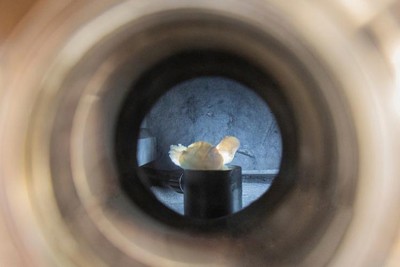 FAMU-FSU Researchers Find Thermal Limits of Advanced Nanomaterials
FAMU-FSU Researchers Find Thermal Limits of Advanced Nanomaterials
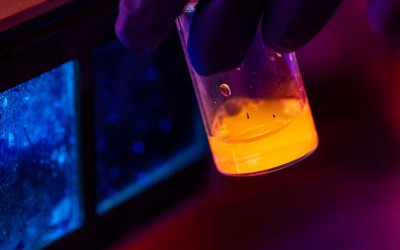 Rice University Department of Chemistry: Exotic Nanotubes Move in Less Mysterious Ways
Rice University Department of Chemistry: Exotic Nanotubes Move in Less Mysterious Ways

